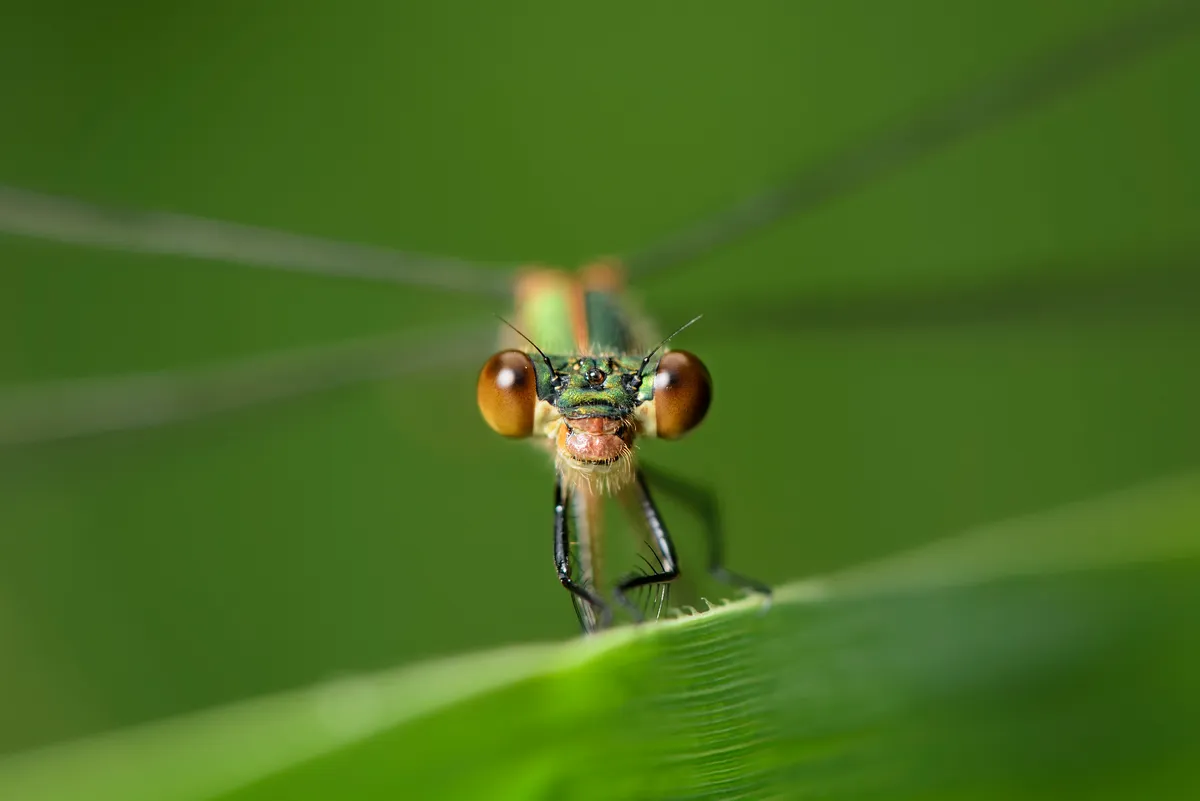I’m far from the first person to suggest that if you scale up invertebrates to human size with their bizarre forms and behaviours for all to see, they would garner a lot more respect and admiration. It’s only knight’s-move-thinking and a pleat in time to imagine them in prehistory, once again animals of awe.
Long before the dinosaurs walked the Earth, dragonflies took to the air. But these griffinflies – precursors of our modern dragonflies – had a wingspan up to 75cm and, like the dragonflies of today, were voracious predators. Why they were so much bigger back then is unclear, but a lot can change in 300 million years. It was originally thought that the greater amount of oxygen in the atmosphere in relation to the tracheal tubes, the bigger they could grow, and indeed scientists have reared larger dragonflies in lab conditions with more oxygen. Others have suggested an evolutionary arms race to occupy the vacancy of largest aerial predator over its prey. Either way, dragonflies, you now have our attention. Each fleeting moment together today, a reminder of the weirdness of your world.

It’s a world we scarcely see. Analogous to the declining health of the oceans, without the lens-squeezing abilities of otters, we don’t get to fully see the brunt of general human impact and our overwhelmed water-sewage systems on life under the surface. If we can’t see it, we can’t be upset by it and demand swift change.
Equally, if we can’t see it, we can’t be bedazzled by it. In the realm of the dragonfly, once the egg is hatched, the larvae will spend four years underwater. Four years of ruthless hunting, taking down anything smaller than themselves, including fish. Mesmerising mandibles hinge and flash forward in fractions of a second to catch prey. Even though they breathe using gills in their rectum, the astonishment continues, as they use the same mechanism to expel water at speed from their rear end to whizz away at any sign of danger.
After moulting up to 17 times, the dragonfly will finally be ready for adulthood and the nymph will crawl out of the water to shed its final excuvia, a piece of wonder on the nature table. The newly emerged teneral adult is strangely vulnerable with a soft body, not yet hardened to the rigours of flight and easy pickings for birds. But once flight begins, there is no better in the animal kingdom. Displays like this anywhere else have an entry ticket, a Harrier Jump Jet, a burger stand and deafening acoustics. By the river bank, thanks to four wings that move independently and the ability to both flap and rotate on an axis, dragonflies can stop and hover; move straight up or down; fly backwards; make hairpin turns at speed or slow motion; and can shift at 100 body lengths per second, equivalent to us running at 350mph. Are you not entertained?
Then how about those eyes? Each huge compound eye has as many as 30,000 lenses, giving almost a full 360° view of the world. Near standard elsewhere in the animal kingdom, di-, tri- and even tetra-chromatic vision is not enough for dragonfly. Instead, with an evolutionary history as long as this, this dragonfly has between 11 and 30 independent channels for conveying colour information in its eye. Psychedelic.
Farewell dragonfly, James Dean of the riverbank. Your fugacious life was enchanting and a lesson to us all: see it all, see every colour and if a fast escape is needed... Until next year.

